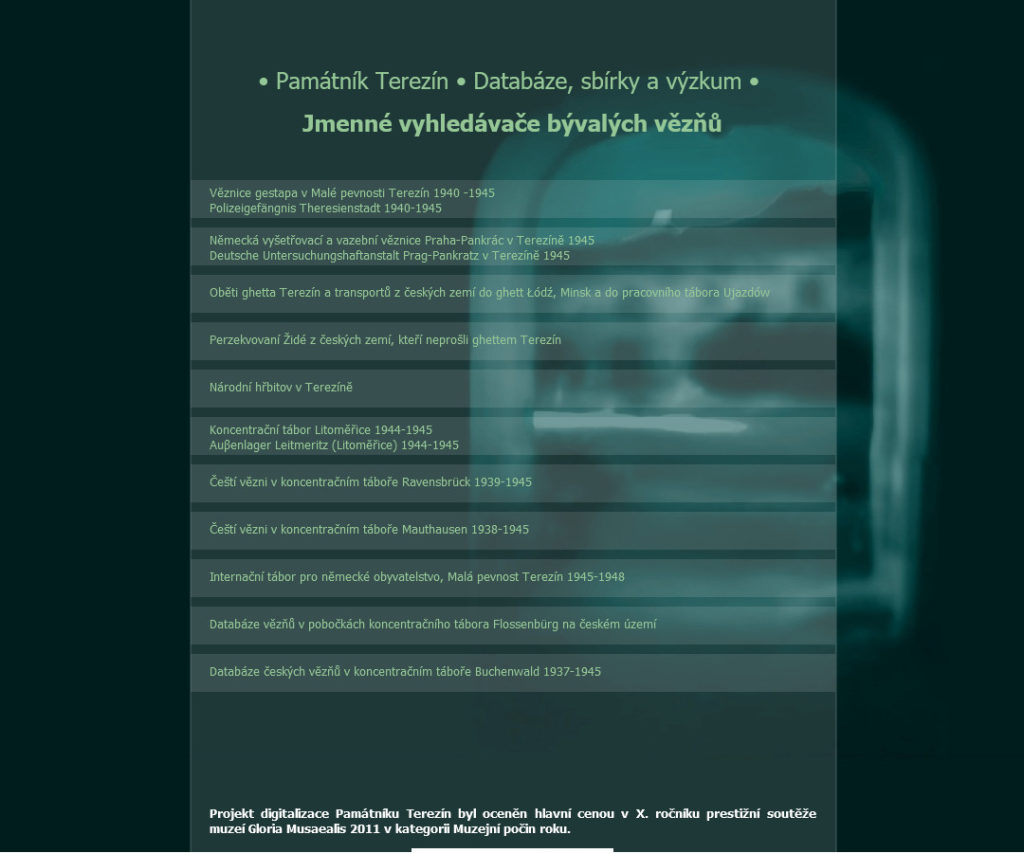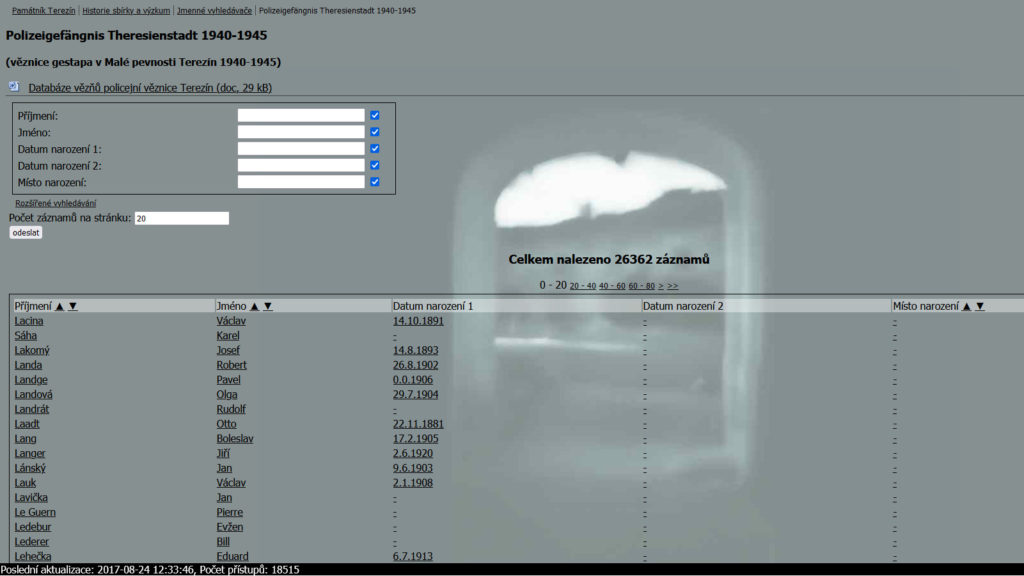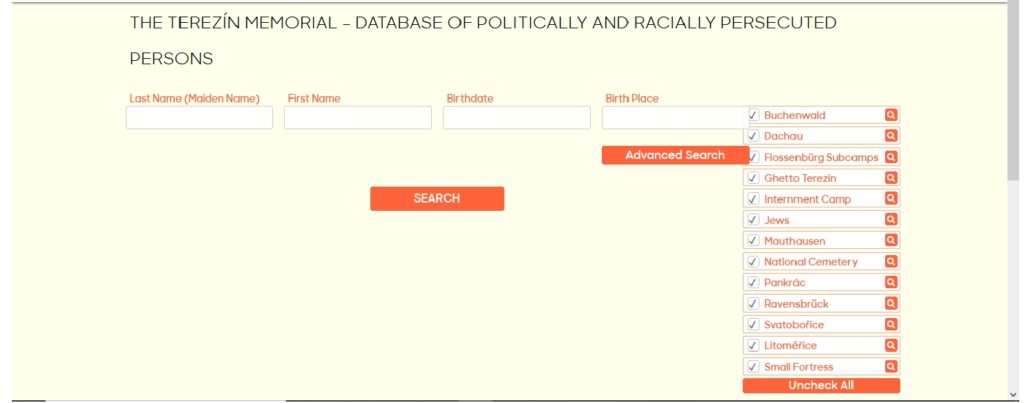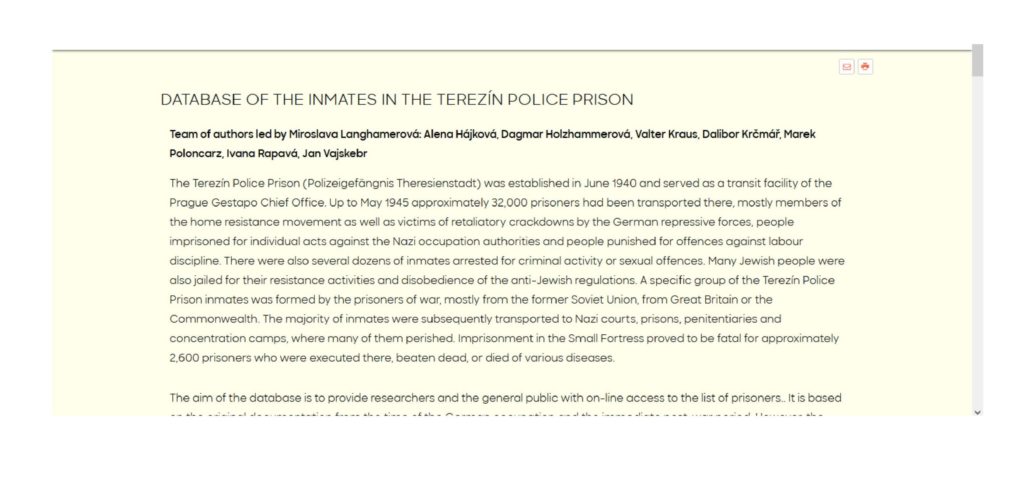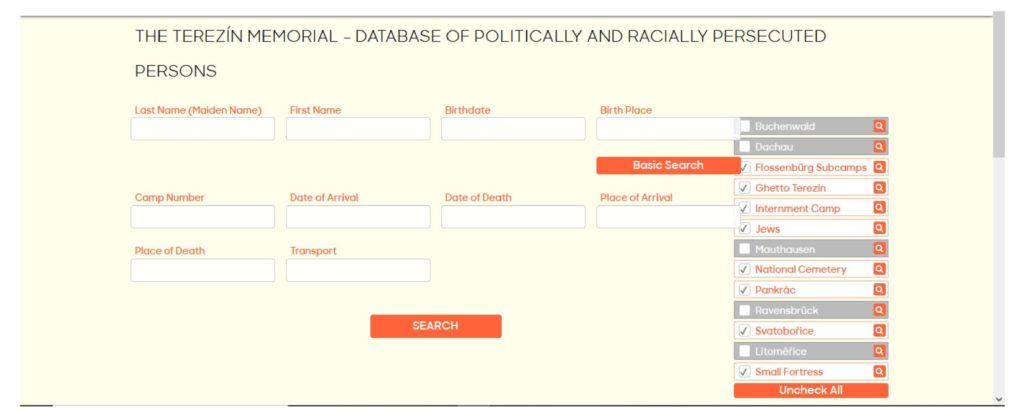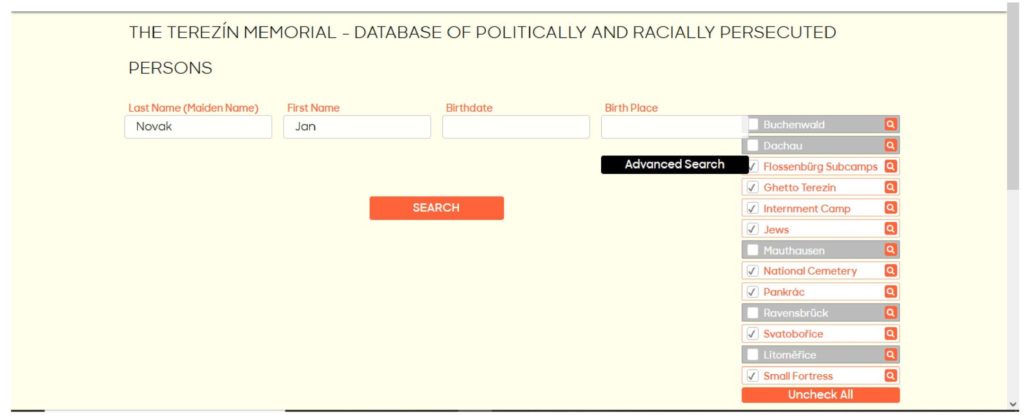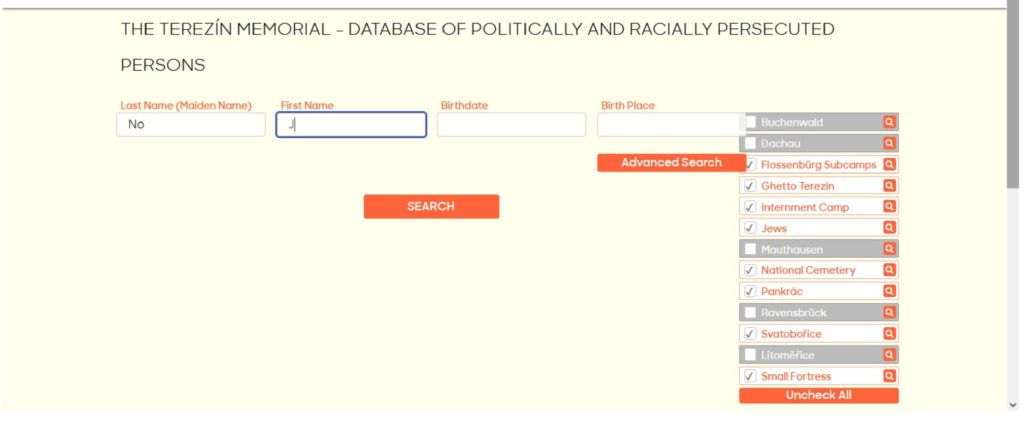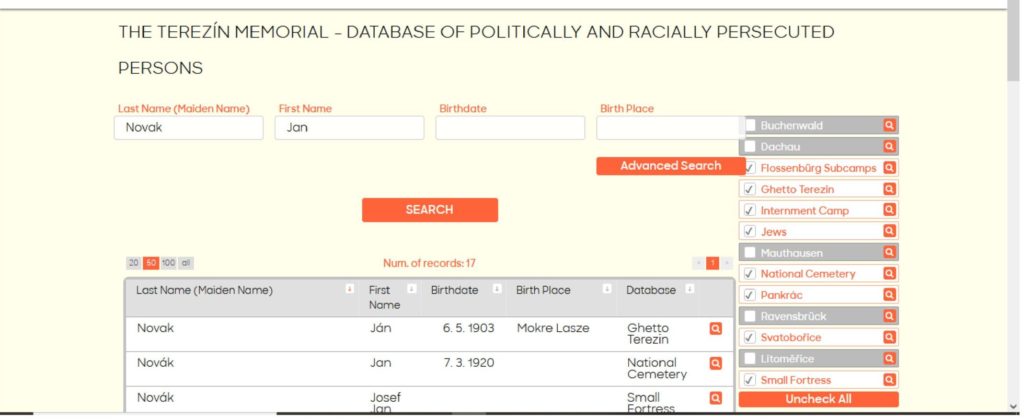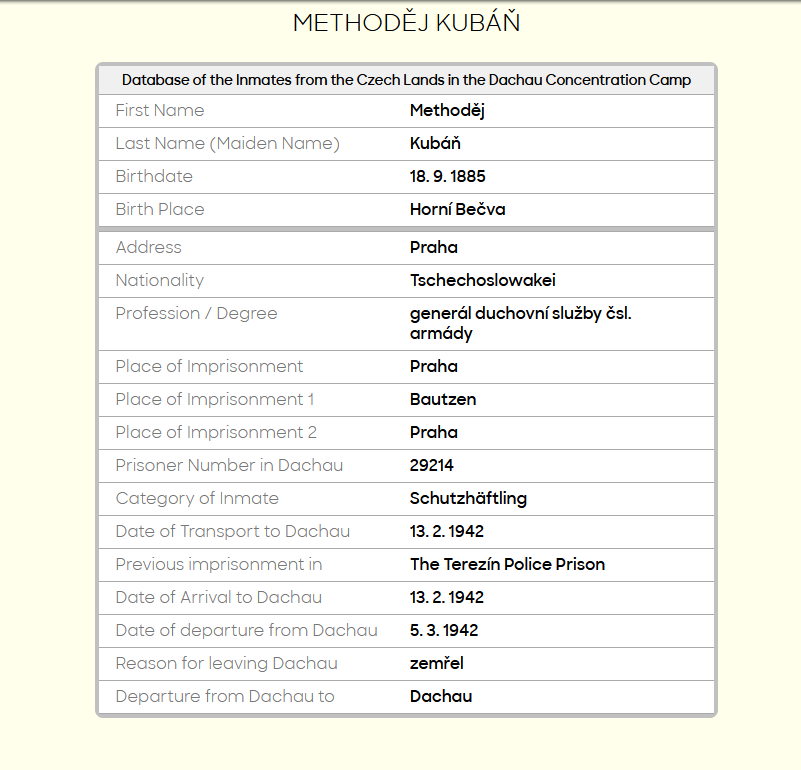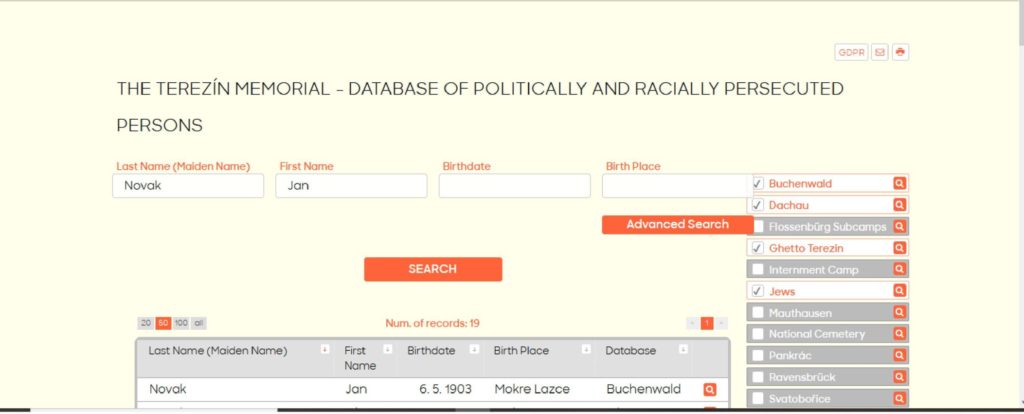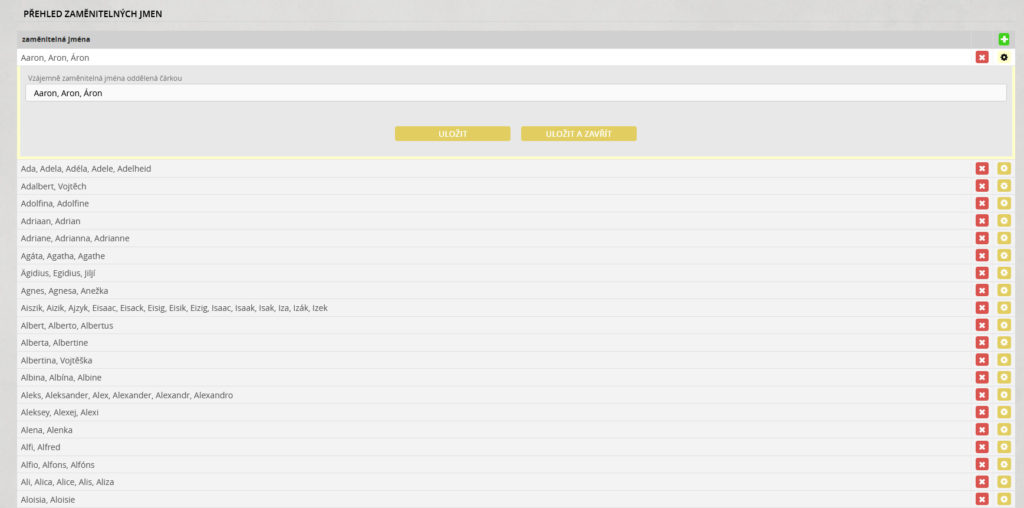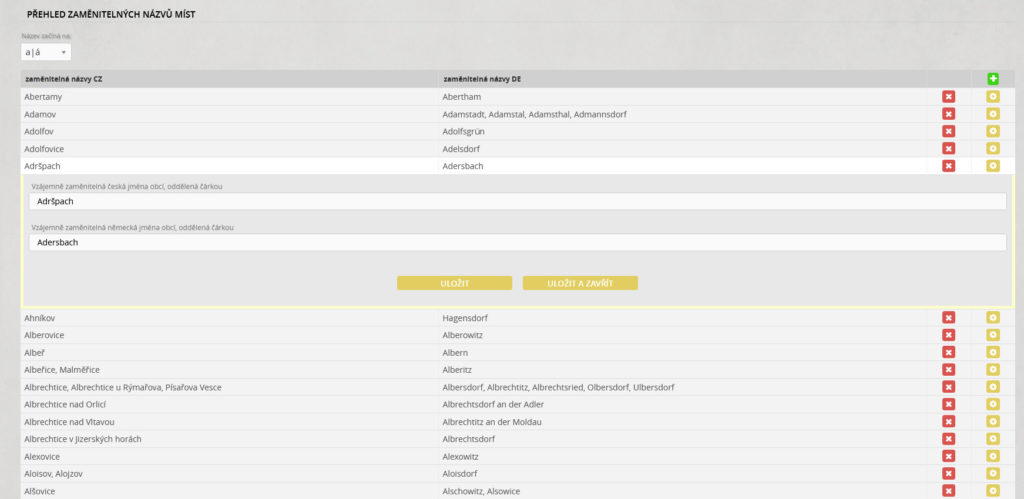The early days of the individual databases of the Terezín Memorial date back to the year 1998. At that time, the employees of the Memorial´s Department of History got down to compiling the first database containing data on the former inmates of the Gestapo Police Prison Terezín.[1] The process of digitizing the collections got under way at the same time.[2] The general public could be introduced to the results of both projects in December 2010, with the databases being made available on the Terezín Memorial website. Called Digitalization of the Collections and the Databases of Former Inmates Persecuted by the Nazi Regime, this wide-ranging project later won the main award at the 10th National Competition of Museums Gloria Musaealis 2011 in the category Museum Project of the Year.
In the following years, the overall number of databases made accessible to the lay public as well as to the community of experts gradually kept rising. In July 2021 their total number reached up to 13[3], with as many as 257 101 entries in all the databases.
Another landmark in the process of making information and collections accessible to the public came with the design of a joint search engine for all the databases. Primarily employees of the Memorial´s Department of History together with their colleagues from other Terezín Memorial departments were involved in devising the new web environment. Their requirements were eventually incorporated in the final version of the website by Ing. Tomáš Kostka, designer and author of the search engines.
Let us take a closer look at the actual possibilities researchers now have at their disposal when searching for information on former inmates; such data have been available on the Terezín Memorial website – https://www.pamatnik-terezin.cz/database since January 2020.
The opening web page contains search mask as well as a list of databases that may be used. The list is given in the panel on the right-hand side of the web page. Since all the boxes in the list are crossed, immediate search in all the databases is thus facilitated. However, visitors to the web pages are free to choose any combination of databases that meets their own criteria for searching.
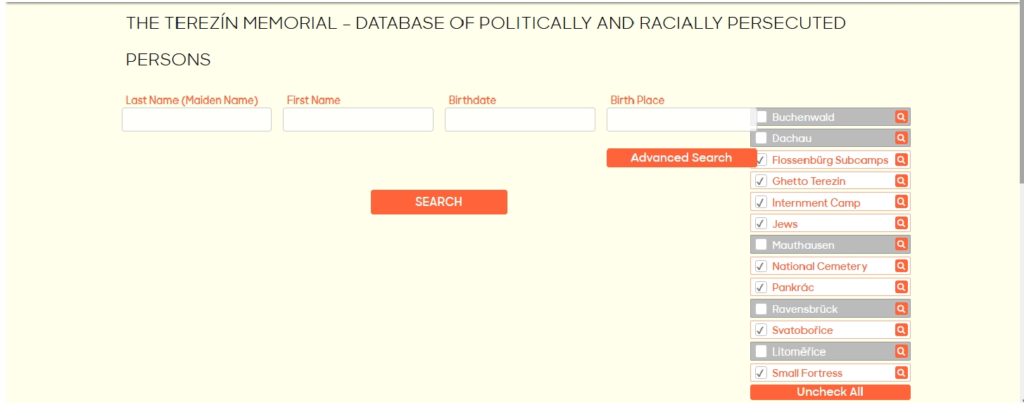
There is a magnifying glass icon in each database. After clicking on the icon, a brief description of the given repressive facility is usually displayed together with the sources for the data on individual persons etc.
The basic search mask makes it possible to search according to four criteria – surname (maiden names of persecuted women may also be entered), name, date and place of birth (if place of birth is not known, the place of residence of the respective person may be given). There are other possibilities in addition to these four criteria. Their offer is shown after clicking ”Rozšířené vyhledávání“ (Advanced Search). These options include prisoner´s camp number (website visitor doesn´t have to know the actual name of the specific repressive facility), date of arrival/departure to/from a repressive facility (again, there is no need to know the name of the given repressive facility), date of death/cremation, place of arrival/departure to/from the given repressive facility or the location to which the inmate was subsequently deported, place of death or transport designation (the latter solely when searching for specific transports to the Terezín Ghetto). The possibility of entering into one box what, at first sight, appears to be heterogeneous information was selected on the basis of the structure of data that had been collected during the compilation of the individual databases.
Whole words or only their parts can be entered in the boxes, thus reducing the risk of distorting correct spelling in cases of some more complex surnames. However, at least two characters are always mandatory.
After clicking the button ”Search“, requested data are displayed under the search mask. When searching for a higher number of entries, researcher can choose – on the left-hand side above this list – how many entries should be displayed on the page, whether 20, 50, 100 or all. If the search results are displayed on several pages, one can browse through these pages by pressing the buttons on the right-hand side of the same line. The total number of entries corresponding to the answering task will be shown in the center. The search results can also be arranged alphabetically according to the above categories – surname, name, date of birth, place of birth or database comprising the requested entry.
After finding the requested person, it is sufficient just to click on the magnifying glass icon and the card containing the requested information will be displayed.
Finally, I would like to draw your attention to the three buttons situated to the right of the displayed card. One of the ways of printing your retrieved information is to press the button bearing the printer symbol. By pressing the envelope icon you can contact Terezín Memorial employees who manage the individual databases. When pressed, the button bearing the letters GDPR briefs users on the rules of the Protection of Personal Data. Needless to add perhaps, the possibility of selecting either Czech or English version of the whole web page is a matter of course.
In addition to the public section of the project, employees of the Department of History also have at their disposal a specific digital environment in which they can manage the individual databases and make various adjustments of the entire interface. Let us take a quick look under the hood of this section. One of the headaches, particularly for foreign researchers, is the use of some special letters of the Czech alphabet. To make their life easier visitors may search in the databases without using diacritics. Another frequent pitfall is that – due to the type of sources employed – both Czech and German names appear in the databases. That is why it is possible to enter the Czech name Jindřich just as its German equivalent – Heinrich.
The same linguistic variability prevails in case of the names of towns, communities or villages. Hence, there is no difference if you enter into the box entitled “place of birth” the name Litoměřice or Leitmeritz. If the database contains names or titles that lack such a Czech and German pair, an employee in charge can immediately add such names into the table of names variant in both language mutations.
Even though it might seem that the creation of the new joint search engine marked the end of the project, the contrary is true. New information is added into the databases or the existing data are corrected. At present, work is under way on extending the database of the Czech inmates of the Buchenwald concentration camp, while preparations are being made to add the database of the inmates of the Flossenbürg concentration camp. There are plans for further improvements of the above described digital environment for searching for politically and racially persecuted persons.
Tomáš Gol
[1] Miroslava LANGHAMEROVÁ, Databáze bývalých vězňů policejní věznice gestapa Terezín (Malá pevnost) Současný stav prací na projektu, červen 2010, in: Terezínské listy 38/2010, pp. 10-25 (in Czech).
[2] Miroslava LANGHAMEROVÁ, Zpráva o digitalizaci sbírek a databázi bývalých vězňů perzekuovaných nacistickým režimem v Památníku Terezín, in: Terezínské listy (Terezín Yearbook) 39/2011, pp. 155-157 (in Czech).
[3] For more details on the databases see, for instance, Jana ŠVARCOVÁ, Databáze českých vězňů v koncentračním táboře Buchenwald 1937-1945. Současný stav projektu, květen 2017, in: Terezínské listy 45/2017, pp. 108-111 (in Czech), or Tomáš GOL, Databáze vězňů z českých zemí v koncentračním táboře Dachau, in: Terezínské listy 47/2019, pp. 117-127 (in Czech).

